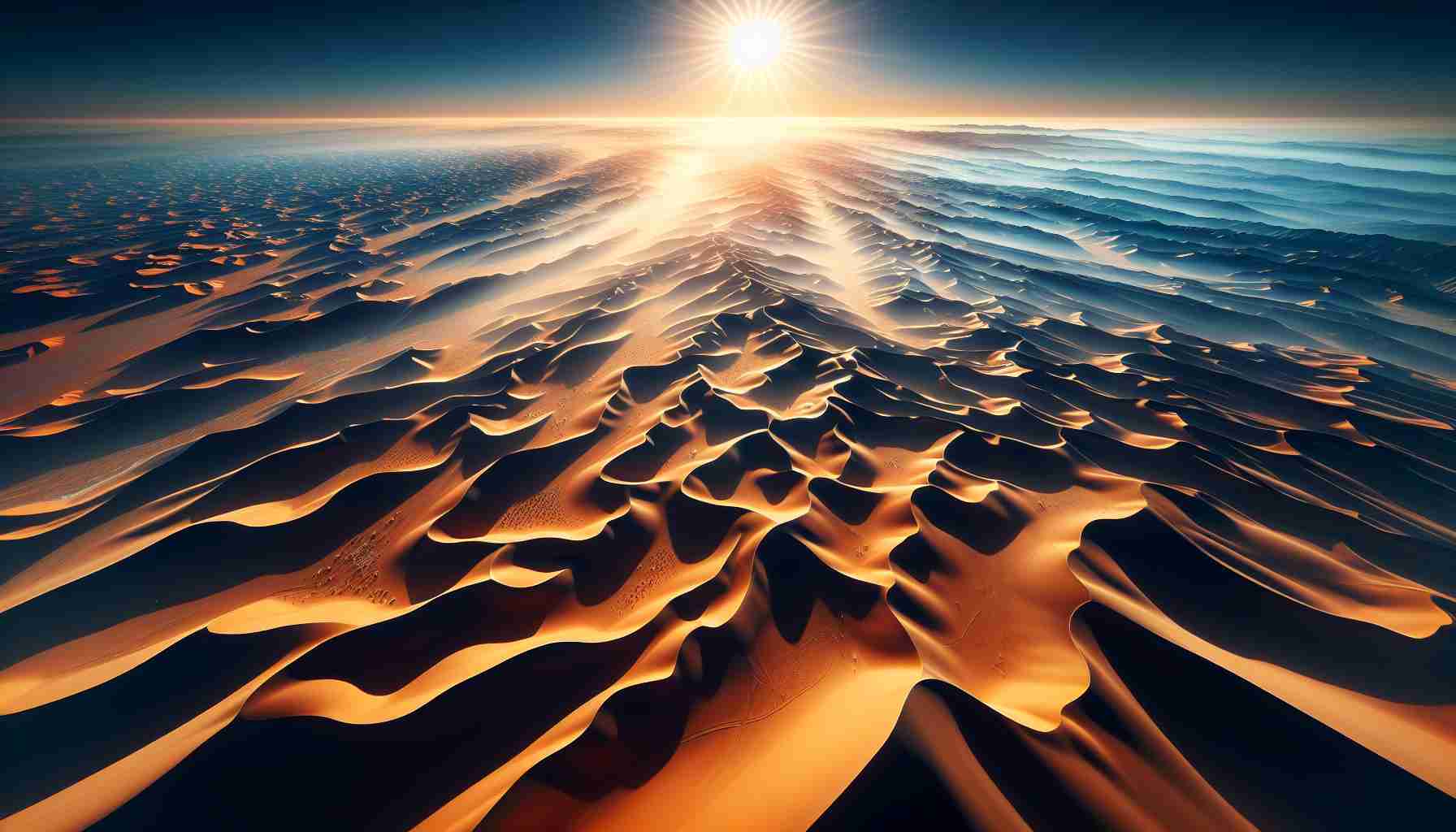Sahara Desert: An Otherworldly Spectacle from Space
An awe-inspiring photograph taken from the International Space Station captures the breathtaking beauty of the western Sahara. Astronauts aboard recently snapped a stunning image while orbiting over southeastern Morocco, near the Algeria border. This unique photograph unveils the vast sea of red sand dunes, transforming the arid landscape into waves seemingly untouched by terrestrial obstacles.
The image, released by NASA’s Earth Observatory, highlights an area known as Erg Chebbi, a mesmerizing sand sea that stretches 18 by 9 kilometers in North Africa. This expansive sand cover includes numerous fascinating features, such as star dunes—also referred to as pyramidal dunes. These striking formations occur when the wind moves sand masses from various directions, creating a peak surrounded by several ridges, resembling a star or pyramid.
The Artistry of Nature from Above
This isn’t merely a spectacle of sand; it’s a testament to nature’s artistry on a grand scale. Each dune is a unique masterpiece sculpted by the relentless winds, offering a visual treat that is both alien and familiar. The photograph serves as a reminder of Earth’s diverse landscapes and the wonders that await discovery from above.
Recently, the world also learned of another space innovation—the launch of the first wooden satellite, marking a new chapter in space exploration. As we continue to venture beyond our planet, images like these inspire awe and curiosity about the mysteries of Earth and beyond.
The Sahara Desert: Catalyst for Technological Change
The Intersection of Natural Wonders and Human Innovation
While the Sahara’s breathtaking spectacle is captured in the stunning image from the International Space Station, the implications of such vast and remote terrains extend far beyond their aesthetic appeal. The Sahara Desert, particularly areas like Erg Chebbi, serves as more than just a testament to the beauty of our planet; it inspires innovative technologies that might otherwise seem reserved for science fiction.
Harnessing Solar Power: Advantages and Challenges
One fascinating aspect of the Sahara is its immense potential for renewable energy. The desert’s vast, sun-drenched expanse is prime real estate for solar power generation, offering several advantages. Solar farms in the Sahara could theoretically supply a significant portion of global energy needs. The consistent sunlight and open spaces provide almost limitless potential to harness solar energy.
However, this proposal also faces considerable challenges. The installation of vast solar arrays in remote areas demands substantial investments in infrastructure and technology. Additionally, there are environmental and socio-political considerations, including potential impacts on local ecosystems and communities. The infrastructure must also withstand harsh desert conditions, which could test the limits of current materials and technologies.
Can Deserts Help Combat Climate Change?
Aside from energy generation, the Sahara Desert presents intriguing possibilities in combating climate change. New technologies look at desert landscapes as possible carbon sinks, exploring how these areas might be used to sequester CO2 efficiently. But is it feasible to turn veritable wastelands into tools against global warming?
The answer is complex. While theoretical models show promise, practical implementation requires a careful balance of ecological preservation and technological innovation. Any disruption to native habitats could have far-reaching consequences, potentially devastating the already fragile desert ecosystems.
Satellites: Bridging Earth and Space
The launch of the first wooden satellite represents a compelling development in space technology. Utilizing sustainable materials, this innovation could redefine how we understand satellite construction. Yet, how does this tie back to Earth, and why should we care?
Satellites, such as those capturing mesmerizing images of the Sahara, play pivotal roles on Earth, from monitoring climate change to guiding global communications. As we innovate with satellite technology, using materials like wood could lead to more sustainable and cost-effective solutions, benefiting both space exploration and terrestrial applications.
What Does This Mean for Future Technologies?
Navigating the intersection of natural phenomena and technological advances, we face several pressing questions: How can we balance technological ambition with environmental stewardship? What ethical frameworks guide the deployment of new innovations in untouched places like the Sahara?
By exploring these questions, humanity can develop technologies that respect and preserve Earth’s diverse beauty while advancing our capacity to solve pressing global challenges. The photographs of the Sahara from space are more than images—they are catalysts for technological exploration and environmental consciousness.
For further explorations in space and technological advancements, visit NASA and SpaceX. Engage with these platforms to stay informed about the latest innovations that could shape our future.







